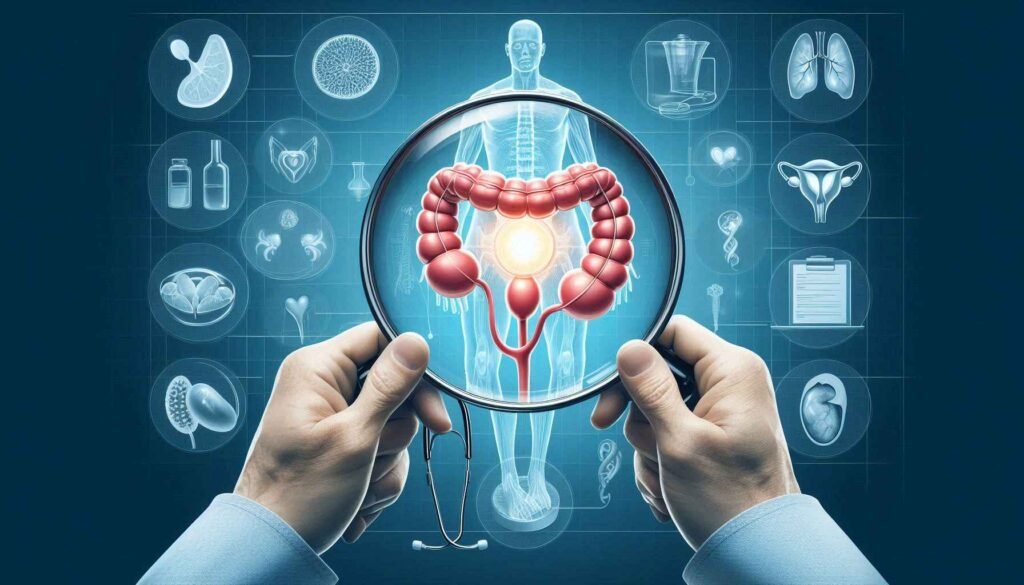
Understanding Prostate Health
Your prostate health matters more than you might think. The prostate, a small gland located just below the bladder in males, plays a crucial role in reproductive health. Its primary function is to produce seminal fluid, the medium that nourishes and transports sperm. While this gland is often overlooked until it causes problems, keeping it healthy is essential for overall well-being, particularly as men age.
In this blog post, we’ll delve into the signs and symptoms of common prostate issues, screening recommendations, and tips for maintaining optimal prostate health. Whether you’re looking to educate yourself or assist a loved one, this comprehensive guide has got you covered.
Common Prostate Issues
The prostate is susceptible to a variety of conditions, especially as men get older. Here are the three most common issues:
1. Benign Prostatic Hyperplasia (BPH)
BPH is a non-cancerous enlargement of the prostate. It’s a condition most men will experience as they grow older, especially after age 50. This enlargement can press against the urethra, causing various urinary symptoms such as:
- Frequent urination, especially at night
- Difficulty starting or stopping urination
- A weak or interrupted urine stream
- Feeling as though the bladder is never fully empty
While BPH is not cancerous, it can significantly affect quality of life and may require medication or even surgical treatment if symptoms become severe.
2. Prostatitis
Prostatitis is an inflammation of the prostate, which can be caused by bacterial infections. It can affect men of all ages and often leads to symptoms like:
- Painful urination
- Pain in the groin, pelvic area, or lower back
- Flu-like symptoms (if caused by a bacterial infection)
There are several types of prostatitis, including acute and chronic forms, and treatment often includes antibiotics or anti-inflammatory medications. Staying hydrated and managing stress can also alleviate symptoms.
3. Prostate Cancer
Prostate cancer is the most serious condition affecting the prostate. It is one of the most common cancers among men, particularly older men. Fortunately, many types of prostate cancer grow slowly and remain confined to the gland, which makes early detection a key factor in successful treatment. However, aggressive forms can spread quickly and require immediate attention.
Signs and Symptoms of Prostate Cancer
Early detection of prostate cancer can save lives. Unfortunately, prostate cancer often presents no symptoms in its initial stages, making regular screening crucial. As the disease progresses, some symptoms may appear, including:
- Difficulty urinating or reduced force in the urine stream
- Blood in the urine or semen
- Unexplained weight loss
- Bone pain
- Erectile dysfunction
If you notice any of these symptoms, it’s important to consult a healthcare provider immediately. These symptoms can also be indicative of non-cancerous conditions like BPH or prostatitis, but only a healthcare professional can determine the underlying cause.
Risk Factors for Prostate Cancer
There are several known risk factors for developing prostate cancer. Understanding them can help you make informed decisions about screening and prevention.
1. Age
Age is the most significant risk factor. The majority of prostate cancer cases occur in men over the age of 50, with the risk increasing substantially with each passing decade.
2. Race
Prostate cancer is more common and often more aggressive in Black men compared to men of other races. While the exact reason remains unclear, it highlights the need for proactive screening in this demographic.
3. Family History
A family history of prostate cancer can double the risk of developing the disease. If a father, brother, or uncle has been diagnosed, particularly before age 65, it’s essential to start screenings early.
4. Lifestyle and Diet
Certain lifestyle choices may also impact prostate cancer risk. Diets high in animal fats and low in fruits and vegetables have been linked to an increased risk. On the other hand, a balanced diet rich in plant-based foods and healthy fats, such as those found in fish and nuts, may reduce the risk.
Screening Recommendations
Screening for prostate cancer can help detect the disease before symptoms appear. There are two primary methods used for prostate cancer screening:
1. PSA Test (Prostate-Specific Antigen)
The PSA test measures the level of PSA—a protein produced by the prostate—in the blood. Elevated PSA levels can indicate prostate cancer, but they can also be caused by BPH or prostatitis. Here are the pros and cons of the PSA test:
- Pros: PSA screening can detect cancer early, allowing for less invasive treatment. Early detection is particularly important for aggressive cancers.
- Cons: Elevated PSA doesn’t always mean cancer is present, leading to false positives and unnecessary anxiety or treatment. In contrast, not all cancers detected by PSA require treatment, as some are slow-growing and unlikely to cause harm.
2. Digital Rectal Exam (DRE)
A DRE involves a healthcare provider physically examining the prostate through the rectum to detect abnormalities. Though less precise than the PSA test, it can provide additional information, especially when used alongside PSA testing.
Screening Guidelines
The decision to undergo screening is personal and should involve a discussion with your healthcare provider. Most medical organizations suggest:
- Starting PSA screening discussions at age 50 for most men.
- Starting at age 40-45 for those at higher risk, including Black men and those with a family history of prostate cancer.
- Stopping routine screening at age 70, or earlier if there are other serious medical conditions that limit life expectancy.
Benefits and Limitations of PSA Screening
Benefits of PSA Screening
- Early Detection: Finding cancer early can lead to more successful treatment outcomes.
- Potential for Less Aggressive Treatment: Early intervention may reduce the need for more aggressive treatments and their associated side effects, such as urinary incontinence and erectile dysfunction.
Limitations of PSA Screening
- False Positives: Elevated PSA levels can also result from benign conditions, leading to unnecessary stress and invasive follow-up tests like biopsies.
- Overdiagnosis: Some prostate cancers are so slow-growing that they will never pose a threat to the individual. Treating such cancers can lead to side effects without any real benefit.
Treatment Options for Prostate Issues
Depending on the condition and its severity, various treatment options are available for prostate issues:
1. Medications
- BPH: Alpha-blockers can relax prostate muscles and improve urine flow, while 5-alpha reductase inhibitors can shrink the prostate.
- Prostatitis: Bacterial prostatitis is treated with antibiotics, whereas chronic forms may require anti-inflammatory drugs.
2. Surgery
Surgery may be necessary for severe cases of BPH or if prostate cancer is advanced. Procedures range from minimally invasive approaches to prostate removal, depending on the diagnosis.
3. Active Surveillance
For men diagnosed with slow-growing prostate cancer, active surveillance—regular monitoring without immediate treatment—might be recommended to avoid the side effects of surgery or radiation.
Importance of Early Detection and Regular Check-Ups
Early detection is crucial in the fight against prostate cancer. Regular screenings and open communication with your healthcare provider can ensure that if something is wrong, it is caught at an early, treatable stage. Particularly for those in high-risk groups, routine check-ups can significantly improve outcomes.
Lifestyle Tips for Maintaining Prostate Health
Maintaining prostate health goes beyond medical check-ups. Here are lifestyle changes you can make to support prostate wellness:
1. Diet
- Include More Fruits and Vegetables: Lycopene-rich foods like tomatoes, cruciferous vegetables like broccoli, and berries are particularly beneficial.
- Healthy Fats: Omega-3 fatty acids, found in fish like salmon, help reduce inflammation.
- Reduce Red Meat and Dairy: Limit the intake of animal fats to help minimize prostate cancer risk.
2. Stay Active
Regular physical activity is beneficial not only for general health but also for reducing the risk of prostate issues. Aim for at least 150 minutes of moderate exercise or 75 minutes of vigorous activity per week.
3. Avoid Smoking and Limit Alcohol Consumption
Smoking has been linked to an increased risk of aggressive prostate cancer, while alcohol should be consumed in moderation. Quitting smoking and reducing alcohol intake can positively impact prostate and overall health.
Conclusion: Take Charge of Your Prostate Health
Prostate health is an important yet often overlooked aspect of men’s health. Whether it’s understanding the signs and symptoms of prostate issues, knowing your risk factors, or scheduling regular screenings, taking a proactive approach is key to maintaining a healthy prostate.
Stay informed, engage in healthy lifestyle habits, and consult your healthcare provider about the best screening options for you. By doing so, you can ensure that your prostate remains healthy and functional, and that any issues are addressed promptly and effectively.
Remember, being proactive today can make a world of difference tomorrow. Take charge of your health—your future self will thank you.



